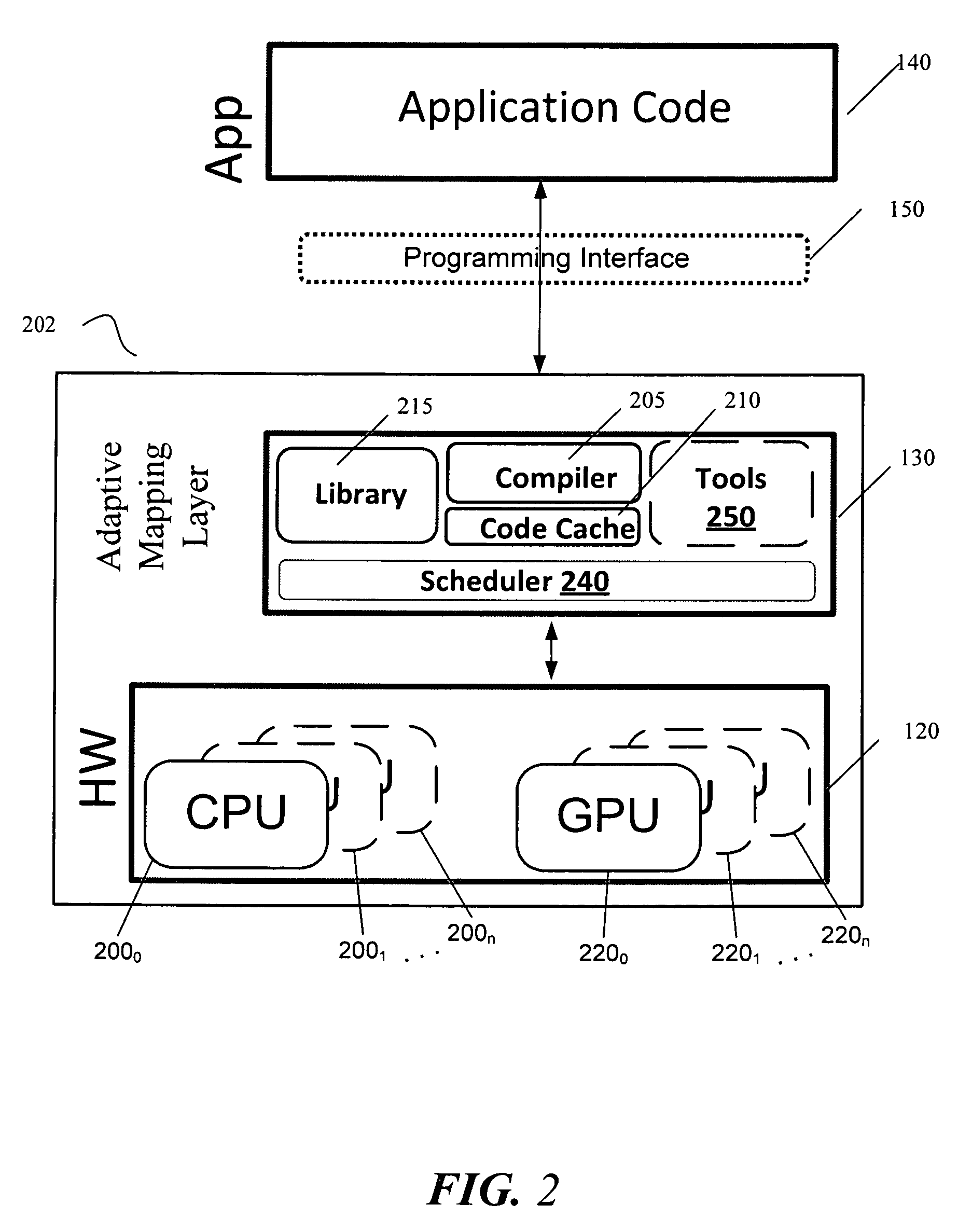Adaptive mapping for heterogeneous processing systems
a processing system and heterogeneous technology, applied in the field of adaptive mapping for heterogeneous processing systems, can solve the problems of requiring significant effort to map a given computation to the underlying hardware, requiring extra and often tedious programming effort, and difficult to program these machines
- Summary
- Abstract
- Description
- Claims
- Application Information
AI Technical Summary
Problems solved by technology
Method used
Image
Examples
embodiment 600
[0082]Referring now to FIG. 6, shown is a block diagram of a second system embodiment 600 in accordance with an embodiment of the present invention. As shown in FIG. 6, multiprocessor system 600 is a point-to-point interconnect system, and includes a first processing element 670 and a second heterogeneous processing element 680 coupled via a point-to-point interconnect 650. As shown in FIG. 6, one or more of processing elements 670 and 680 may be multicore processors, including first and second processor cores (i.e., processor cores 674a and 674b and processor cores 684a and 684b). One processing element 670 may be, for example, a multi-core CPU while the second processing element 680 may be, for example, a graphics processing unit. For such embodiment, the GPU 680 may include multiple stream processing cores. For other embodiments, the second processing element may be another processor, or may be an element other than a processor, such as a field programmable gate array.
[0083]While...
embodiment 700
[0088]Referring now to FIG. 7, shown is a block diagram of a third system embodiment 700 in accordance with an embodiment of the present invention. Like elements in FIGS. 6 and 7 bear like reference numerals, and certain aspects of FIG. 6 have been omitted from FIG. 7 in order to avoid obscuring other aspects of FIG. 7.
[0089]FIG. 7 illustrates that the processing elements 670, 680 may include integrated memory and I / O control logic (“CL”) 672 and 682, respectively. For at least one embodiment, the CL 672, 682 may include memory controller hub logic (MCH) such as that described above in connection with FIGS. 5 and 6. In addition. CL 672, 682 may also include I / O control logic. FIG. 7 illustrates that not only are the memories 642, 644 coupled to the CL 672, 682, but also that I / O devices 714 are also coupled to the control logic 672, 682. Legacy I / O devices 715 are coupled to the chipset 690.
[0090]Embodiments of the mechanisms disclosed herein may be implemented in hardware, software...
PUM
 Login to View More
Login to View More Abstract
Description
Claims
Application Information
 Login to View More
Login to View More - R&D
- Intellectual Property
- Life Sciences
- Materials
- Tech Scout
- Unparalleled Data Quality
- Higher Quality Content
- 60% Fewer Hallucinations
Browse by: Latest US Patents, China's latest patents, Technical Efficacy Thesaurus, Application Domain, Technology Topic, Popular Technical Reports.
© 2025 PatSnap. All rights reserved.Legal|Privacy policy|Modern Slavery Act Transparency Statement|Sitemap|About US| Contact US: help@patsnap.com



